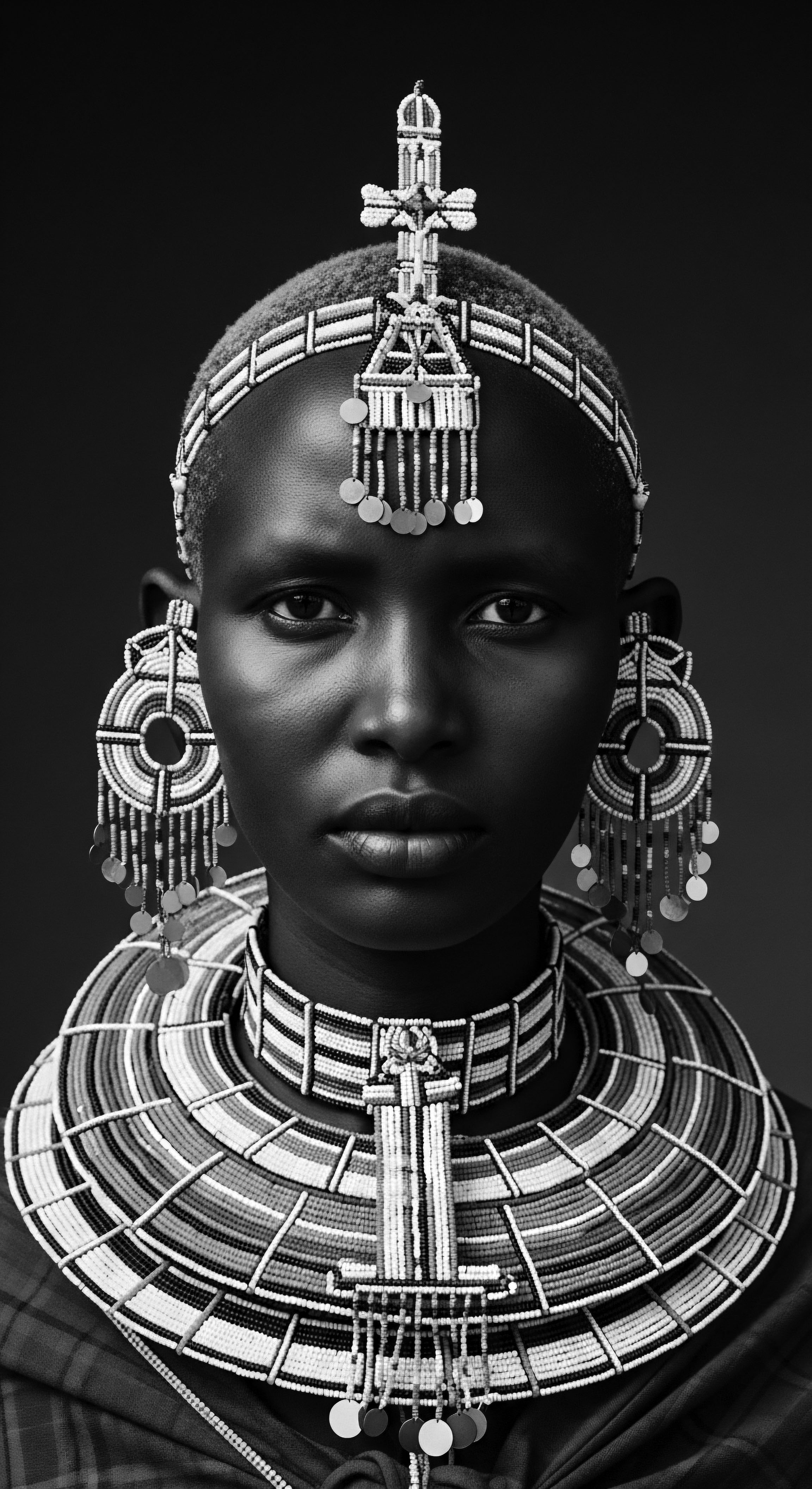
Roots
Consider, for a moment, the very strands that spring from the scalp, each a testament to life’s persistent artistry. Our textured hair, in its myriad forms, carries ancestral whispers, a living chronicle spun from the depths of time. It is a biological marvel, certainly, with its unique follicular geometry and hydration needs, yet to truly understand its beginnings and the materials that graced it, one must feel the pulse of history, the rhythm of communities where hair was not just a biological growth but a sacred conduit. Early adorned textured hair tells tales of ingenuity, of deep connection to the earth, and of identity proclaimed long before the written word could capture its full glory.
The earliest expressions of human self-adornment were inherently tied to what was readily available from the immediate natural environment. For those with textured hair, particularly across the diverse landscapes of the African continent, these materials were chosen not merely for superficial beauty. They served as protectors, as healers, as communicators of lineage, status, and spirit. The intrinsic structure of textured hair – its coil, its spring, its often porous nature – guided these choices, prompting a wisdom in material application that millennia later, science would begin to comprehend.
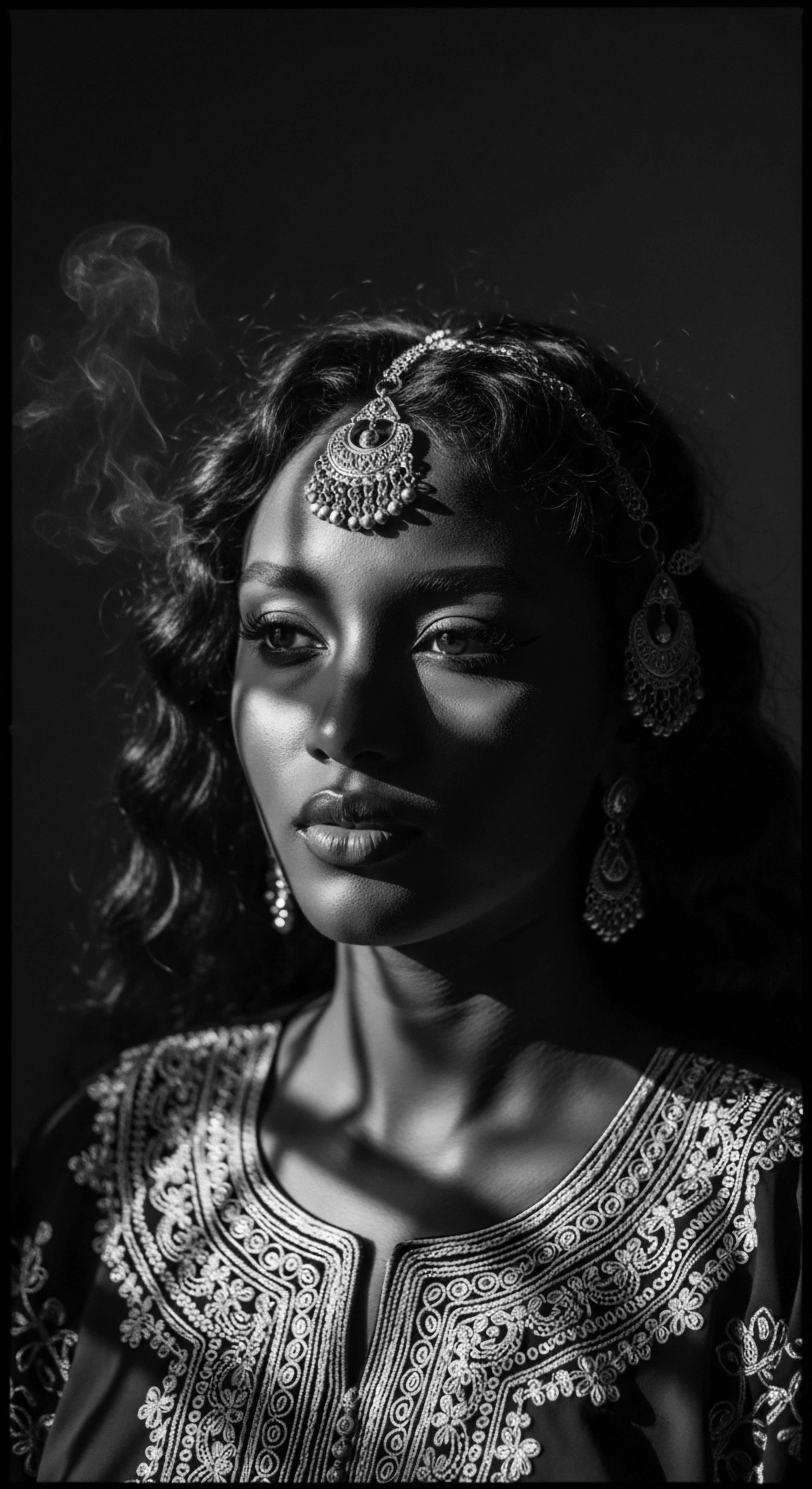
What Early Materials Signified for Textured Hair?
The journey into understanding the materials that adorned early textured hair begins with the earth itself. Clays and mineral pigments, rich in their earthy hues, were among the first such embellishments. These natural deposits, gathered from riverbeds and ancient landscapes, offered more than color. They provided a protective coating, a shield against the sun’s relentless rays and the harsh dryness of arid climates.
Consider the deep ochres, reds, and browns, often mixed with animal fats or plant oils, forming a paste that coated the hair and scalp. This practice was not solely aesthetic; it offered a physical barrier, sealing in moisture, deterring insects, and cleansing in environments where water was a precious commodity. Such applications speak to a profound understanding of reciprocity with the land, transforming elemental components into tools of care and expression.
Beyond mineral earth, the plant kingdom offered a vast palette of adornment. Fibers from grasses, bark, and leaves were twisted into adornments, braided into extensions, or woven directly into existing hair. These botanical elements provided structure and allowed for elaborate styles that conveyed messages about an individual’s age, marital status, or community role.
The very act of preparing these plant materials—softening bark, stripping leaves, drying herbs—was a ritual of engagement with the natural world, a testament to the skill and knowledge passed down through generations. Such ancestral practices highlight the inherent ingenuity of early communities, adapting to their surroundings with an artful eye and a functional hand.
Early forms of adornment were deeply rooted in the practical wisdom of living with the land.
Animal derivatives also held a significant place. Bone, shell, and hide were shaped into beads, pendants, and clips, each telling a silent story of trade, hunting prowess, or spiritual connection. These were not mass-produced items; each piece was a creation, often imbued with spiritual significance, reflecting the symbiotic relationship between humanity and the animal world.
Feathers, too, light and vibrant, were incorporated, symbolizing flight, freedom, or connection to the avian spirits believed to carry messages between worlds. The gathering, shaping, and placement of these animal elements demonstrated a respect for the cycle of life and a profound sense of integration with the ecosystem.
The materials chosen for early textured hair adornment were inextricably linked to the diverse biomes in which communities lived.
- Ochre ❉ Earth-derived pigments, particularly red ochre, often mixed with fats or oils, served as both a cosmetic and a protective agent for hair and skin, notably among groups like the Himba.
- Plant Fibers ❉ Twisted grasses, bark, and palm fibers were used to create extensions, braids, and woven structures that added length, volume, and intricate patterns.
- Shells and Bones ❉ Shaped and polished, these skeletal remains of marine or terrestrial life were fashioned into beads, cowries, and decorative elements, often indicating social standing or wealth.
- Feathers ❉ Lightweight and symbolic, various bird feathers were incorporated into hairstyles for ceremonial purposes or to denote particular roles within a community.
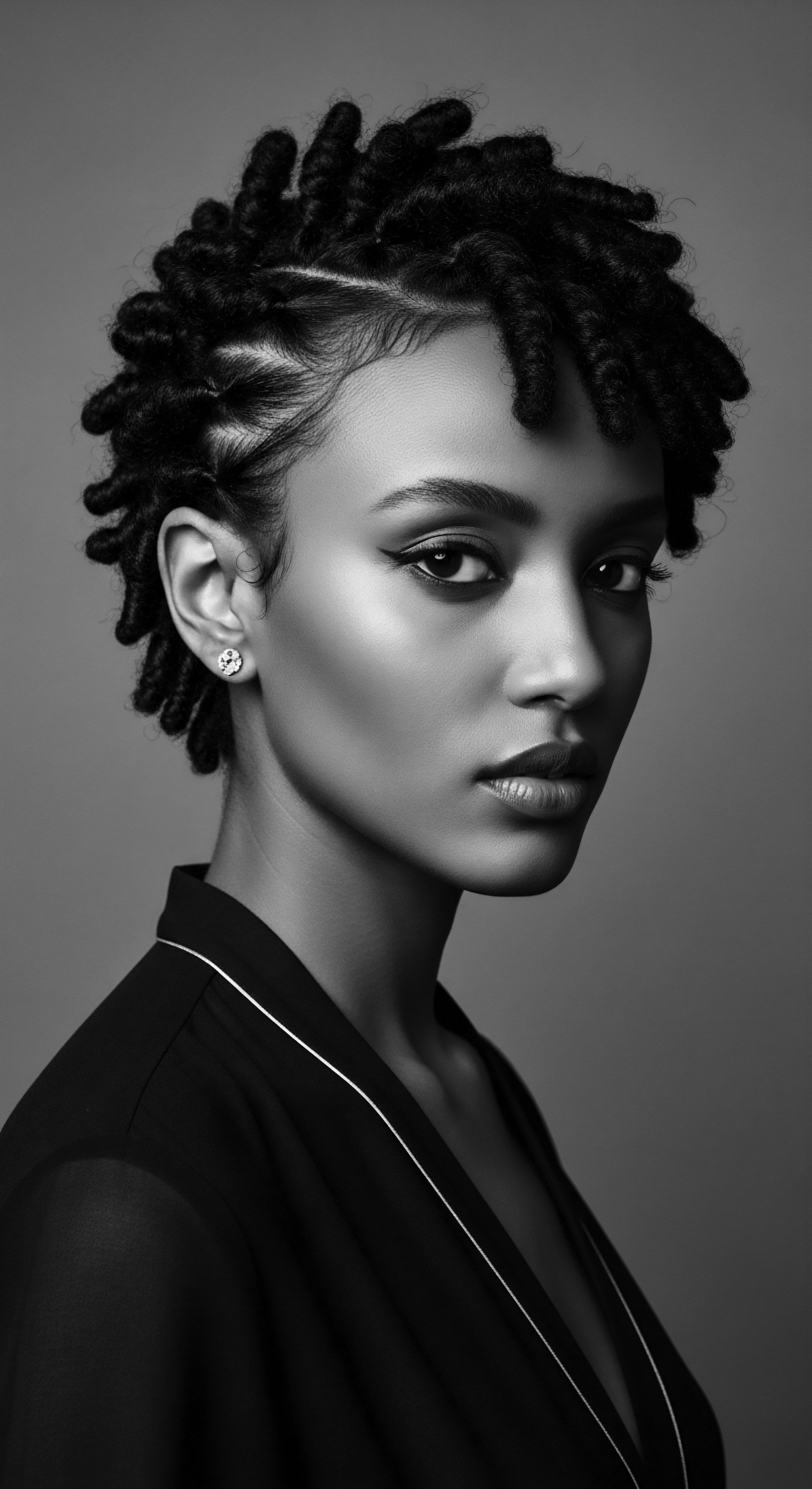
Ritual
The adornment of early textured hair transcended mere aesthetics; it was a ritual, a profound conversation between self, community, and ancestry. These practices shaped not only appearance but also identity, marking rites of passage, celebrating milestones, and communicating narratives without utterance. The materials that graced these styles were chosen with intent, each element playing a part in the larger symphony of communal life. From the careful gathering of clay to the meticulous threading of beads, every action held purpose, reflecting a holistic approach to wellbeing that saw hair as a sacred extension of the spirit.
In many ancient African societies, hair styling, often performed communally, was a time for storytelling, for sharing wisdom, and for reinforcing social bonds. The tools employed were often crafted from the same natural materials that became adornments ❉ polished wood combs, bone pins, and gourd containers for preparations. These were not simply utilitarian items; they were extensions of skilled hands, infused with the energy of tradition.
The choice of specific adornments, therefore, was never arbitrary. It was a language, spoken through symbols and textures, understood by all who belonged to the cultural fabric.
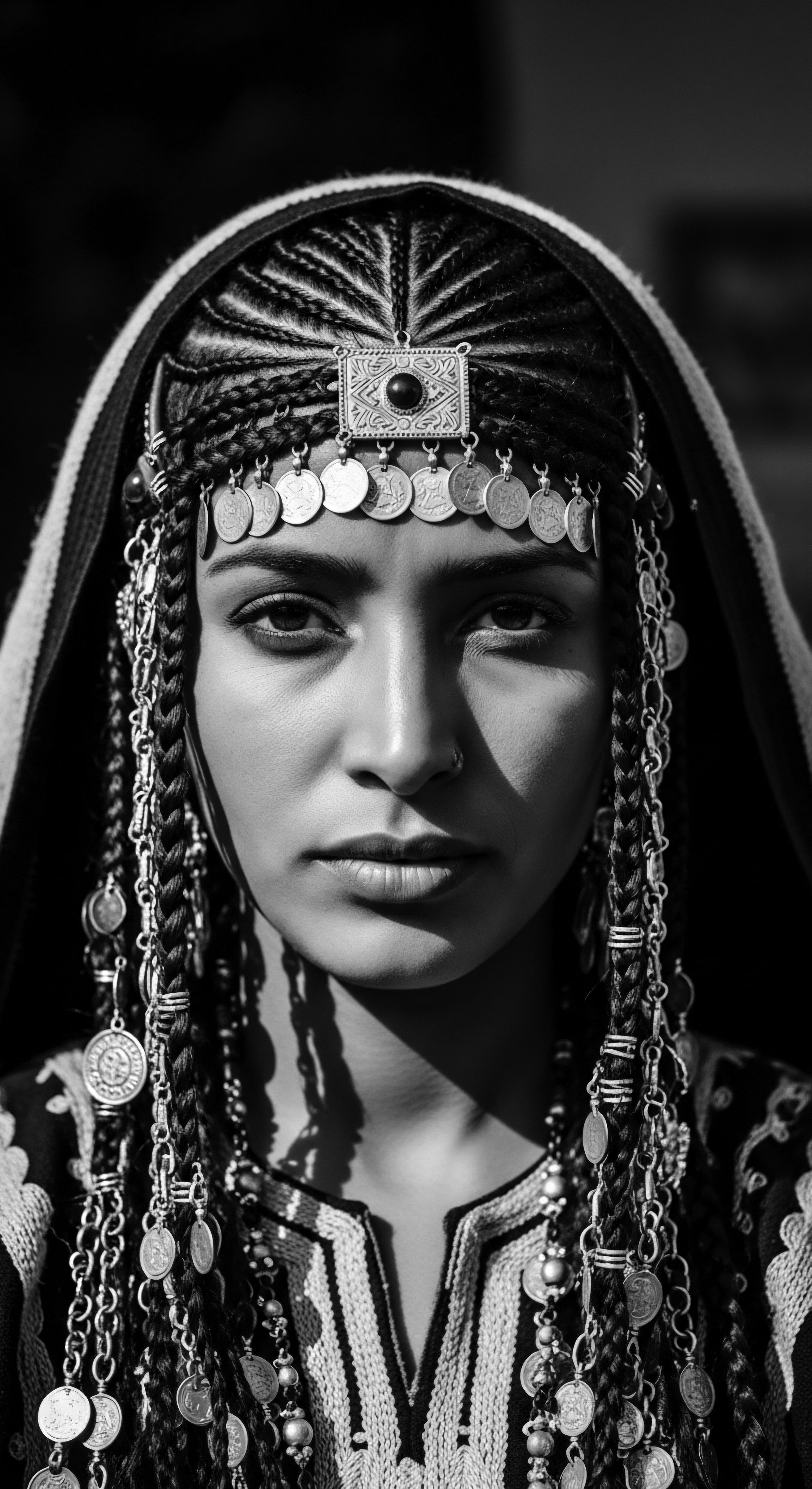
How Did Early Styling Tools and Adornments Shape Heritage?
Consider the ancient use of Cowrie Shells, particularly valued across West African societies, for example, among the Fulani people. These small, elegant shells, once used as currency, were meticulously braided into hair, often signaling fertility, prosperity, or a woman’s marital status. Their presence in a hairstyle was a visual declaration, a testament to both personal and familial standing.
This practice highlights how material wealth and spiritual significance were intertwined, transforming simple natural objects into powerful cultural markers. The very act of incorporating them meant engaging with an economy of value that extended far beyond the immediate visual.
Similarly, metals, albeit in their early, often unrefined forms, entered the repertoire of adornment. Copper and iron, hammered into rings, spirals, and intricate filigree, became expressions of artistry and status. In some cultures, these metallic adornments were worn not just for their sheen but for their perceived protective qualities, channeling energy or warding off negative influences.
The weight and gleam of these metals added another layer of visual and symbolic density to the elaborate hairstyles, reflecting the community’s mastery over natural resources and the skill of its artisans. Such pieces were often handed down through generations, accumulating meaning and stories with each passing wearer, becoming veritable heirlooms of identity.
Early adornments were more than decorative; they were a vibrant language articulating social standing and spiritual connection.
The creation of wigs, particularly in ancient Egypt, also represents a sophisticated form of hair adornment, utilizing materials like human hair, wool, and plant fibers. These wigs were not just symbols of hygiene or status; they were canvases for further adornment. Precious metals, beads, and even perfumed fat cones were incorporated, transforming these elaborate headpieces into a grand statement of wealth, religious devotion, and a connection to the divine. The practice of adorning these wigs with gold or intricate beadwork speaks to a mastery of materials and a dedication to beauty that transcended the everyday.
The interplay of raw earth and human ingenuity laid the groundwork for sophisticated adornment practices.
| Material Red Ochre |
| Traditional Use in Hair Adornment Paste mixed with animal fat or oils, applied to hair |
| Cultural or Symbolic Significance Protection from elements, beauty, connection to land and ancestors. |
| Material Cowrie Shells |
| Traditional Use in Hair Adornment Braided or strung into hair, often in elaborate patterns |
| Cultural or Symbolic Significance Fertility, prosperity, wealth, social status, and spiritual symbolism. |
| Material Glass Beads |
| Traditional Use in Hair Adornment Woven into braids, twists, or locs, sometimes forming crowns |
| Cultural or Symbolic Significance Indication of age, marital status, tribal affiliation, spiritual meaning, and status. |
| Material Metals (Copper, Iron, Gold) |
| Traditional Use in Hair Adornment Formed into rings, spirals, or decorative clips for hair |
| Cultural or Symbolic Significance Wealth, social hierarchy, protection, and artistic expression. |
| Material Plant Resins |
| Traditional Use in Hair Adornment Used as a binding agent for pigments or as a fragrant addition |
| Cultural or Symbolic Significance Fragrance, sealant, part of sacred rituals, like the Himba's omuzumba shrub resin. |
| Material These materials, simple in their origin, became profound carriers of cultural meaning and heritage through their application in hair adornment. |

Relay
The wisdom embedded in early hair adornment practices is not confined to antiquity; it flows through the veins of contemporary textured hair care, a continuous relay of ancestral knowledge. The deep understanding of how specific materials interact with hair, for protection, conditioning, or expressive declaration, forms a powerful current that shapes our present-day approach to holistic hair health. It is a dialogue across centuries, where the elemental becomes scientific, and the traditional finds validation in modern understanding.
For communities whose very existence has been a testament to resilience, hair and its adornment have long stood as powerful symbols of self-determination and cultural memory. The materials chosen were not arbitrary; they were selected with an intuitive grasp of their properties, an understanding often born from generations of observation and experimentation. This deep-seated knowledge, though uncodified in modern scientific terms, was a profound system of care and cultural transmission.
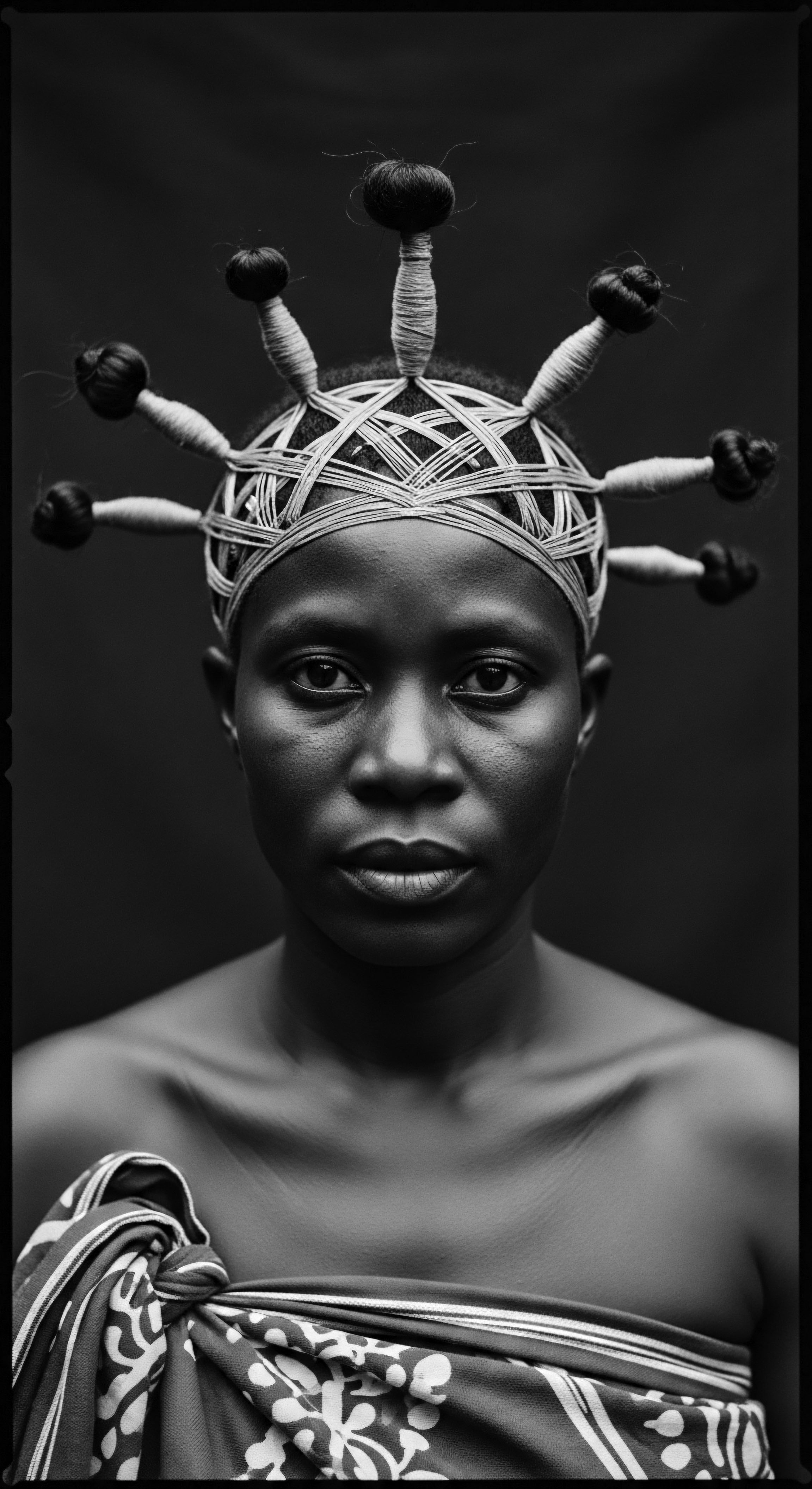
How Do Ancestral Hair Adornments Reflect Holistic Wellness?
Consider the Himba people of Namibia, whose tradition of covering their skin and hair with ‘otjize’ – a rich, reddish paste made from ground Ochre (pulverized hematite stone) mixed with butterfat and sometimes scented with aromatic omuzumba shrub resin – serves as a profound historical example. This daily ritual, passed down through countless generations, is a multifaceted practice. The otjize paste protects their skin and hair from the harsh desert sun, acts as a cleanser, deters insects, and provides a continuous conditioning treatment.
Beyond its practical benefits, otjize holds immense cultural and symbolic value. It is the Himba ideal of beauty, symbolizing the earth’s life-giving color, the hue of blood, and a deep connection to their ancestral land (Iorjaa, 2022). The intricate dreadlocks and hairstyles of Himba women, meticulously coated with this paste, signify age, marital status, and social position (Van Wolputte, 2003).
This practice eloquently speaks to a holistic worldview where adornment, personal care, and spiritual connection are inextricably bound. The wisdom of otjize reminds us that true wellness for textured hair extends beyond superficial application; it is deeply rooted in ancestral practices and a harmonious relationship with the environment.
The enduring practice of adorning textured hair serves as a testament to cultural continuity and adaptive brilliance.
The application of plant-based oils and butters, for example, has been a consistent thread in textured hair care across African civilizations. From ancient Egyptian use of castor oil and various fats to the widespread reliance on Shea Butter in West Africa and marula oil in Southern Africa, these natural emollients were not just for shine. They were vital for scalp health, moisture retention, and promoting hair pliability, essential qualities for crafting elaborate protective styles that minimized breakage and promoted length retention. Modern science now affirms the rich fatty acid profiles and vitamin content of these very ingredients, validating the ancestral wisdom that instinctively understood their benefits for coily and kinky textures.
The historical adoption of specific hair accessories also served a dual purpose of adornment and practicality. For instance, the strategic placement of beads and shells within braided styles often helped to weigh down and protect hair ends, a practical consideration for maintaining length and preventing tangling. These embellishments were not merely decorative flourishes but integrated components of a care regimen that implicitly understood the dynamics of textured hair biology. The continuation of such practices, even in contemporary protective styling, reflects a living heritage, a quiet relay of information across generations.
- Plant Oils ❉ Castor, moringa, argan, and especially shea butter were used as potent moisturizers and sealants, guarding against dryness and breakage, validating current scientific understanding of lipid barriers.
- Mineral Pigments ❉ Ochre and certain clays provided natural tinting while simultaneously offering sun protection and scalp cleansing properties, demonstrating an early awareness of environmental factors impacting hair.
- Fibers and Threads ❉ These were not only used to create extensions for aesthetic purposes but also served as foundational elements for protective styles, reducing manipulation and promoting hair growth.
The ancestral ingenuity in utilizing materials for textured hair care and adornment provides a foundation for our contemporary understanding. It highlights how practices deeply intertwined with cultural identity also offered tangible benefits for hair health, underscoring a legacy of profound knowledge.

Reflection
As we gaze upon the myriad materials that graced early textured hair, we do not merely observe historical curiosities. We bear witness to the profound ingenuity, the cultural depth, and the spiritual reverence that marked these ancestral practices. Each shell, each strand of fiber, each application of earth-toned pigment, tells a story of survival, of identity asserted, and of beauty defined on one’s own terms. The hair, in its glorious coils and kinks, became a living canvas, a testament to the enduring spirit of communities across the diaspora.
The echoes from the source, our elemental biology and ancient practices, continue to guide us. The tender threads of care and community still bind us, reminding us that hair rituals are often shared experiences, fostering connection and the transfer of generational wisdom. Ultimately, this journey through the materials of old helps us understand the unbound helix of textured hair itself – its journey through time, its voice in the present, and its role in shaping futures where heritage is a compass, ever pointing us toward self-acceptance and luminous wellbeing. Our strands hold the soul of our collective past, waiting for us to listen, learn, and carry forward their timeless narratives.
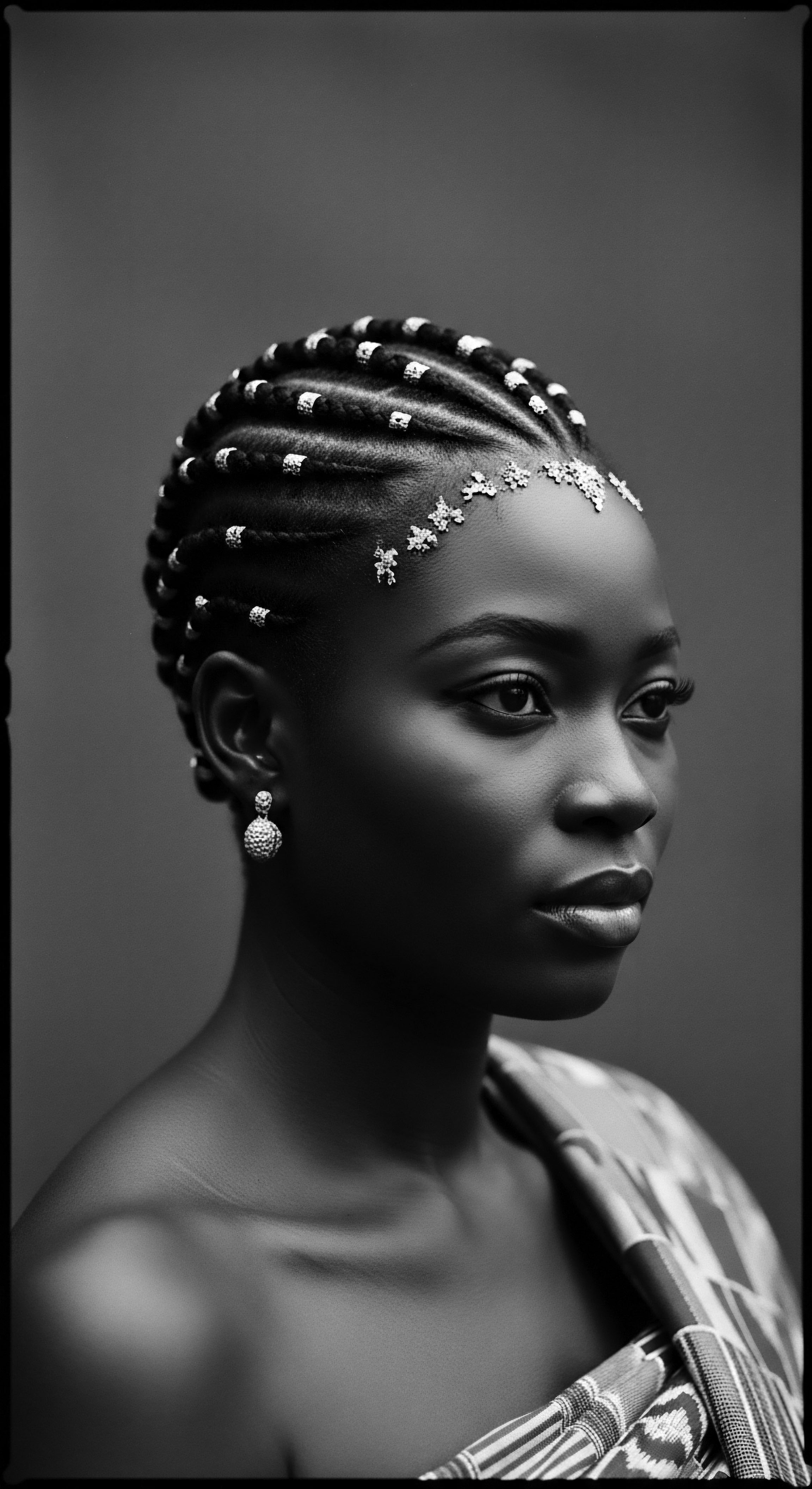
References
- Iorjaa, Sonter. (2022). The Himba Tribe ❉ People and Places Vol. 1.
- Van Wolputte, Steven. (2003). Materializing Culture ❉ The Himba of Namibia. Ghent University, PhD dissertation.
